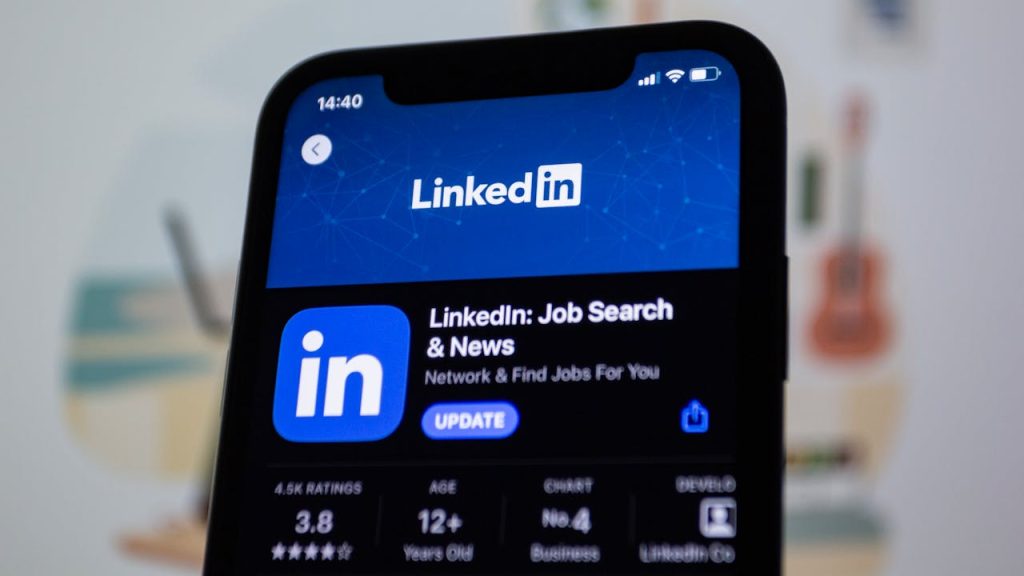Landing your first job as a recent graduate has never been more competitive. With hundreds of applications for every entry-level position, you need every advantage you can get. The good news? Artificial intelligence is changing how we search for jobs, and these tools can give you a real edge over other candidates.
Whether you’re struggling to get your resume noticed or need help preparing for interviews, AI-powered job search tools can transform your approach. Here are the essential platforms every graduate should be using in 2025 (and they are basically free).
LinkedIn’s AI Features: Your Professional Network on Steroids

LinkedIn has quietly become one of the most powerful AI-driven job search platforms. The platform’s AI doesn’t just show you job listings – it actively works to match you with opportunities that fit your background.
LinkedIn’s Premium Career tool uses machine learning to analyze job postings and tell you exactly how well you match each role. It breaks down which skills you have, which ones you’re missing, and even suggests courses to fill those gaps. For graduates who often feel underqualified, this feature is invaluable. (Take note that this is a paid feature).
LinkedIn’s own research shows that candidates who use their AI matching tools are 40% more likely to hear back from employers.
The platform’s “Easy Apply” AI has also gotten smarter. It can now pre-fill applications using information from your profile, saving hours of repetitive data entry. More importantly, LinkedIn’s algorithm learns from your application patterns and starts suggesting better-matched positions over time.
How to use it effectively: Complete your LinkedIn profile thoroughly, including skills, education, and any internships or projects. The more data you give LinkedIn’s AI, the better it can match you with relevant opportunities.
Jobscan: Beat the ATS Robots
Here’s a harsh reality: most large companies use Applicant Tracking Systems (ATS) to filter resumes before any human sees them. Studies show that up to 75% of resumes never reach a hiring manager because they don’t pass these automated screenings.
According to Harvard Business Review, 88% of qualified candidates are rejected by ATS systems due to formatting and keyword issues.
Jobscan solves this problem by using AI to analyze how well your resume matches specific job descriptions. You simply upload your resume and paste in the job posting, and Jobscan tells you exactly what to change.
The tool identifies missing keywords, suggests formatting improvements, and even checks if your resume will parse (or display) correctly in common ATS systems. For graduates who are still learning how to write effective resumes, this guidance is crucial.
Real-world impact: Users report getting 3x more interview calls after optimizing their resumes with Jobscan. The tool costs around $50 per month, but many users find jobs within their first month of use.
Google for Jobs: The Hidden AI Job Search Engine
Most people don’t realize that Google has built sophisticated AI into its job search functionality. When you search for jobs on Google, you’re not just getting basic listings – you’re accessing one of the most advanced job matching systems available.
Google’s AI analyzes multiple factors: your search history, location, previous job searches, and even the time of day you typically search. This creates a personalized job feed that gets more accurate over time.
The platform aggregates listings from hundreds of job boards, company websites, and recruiting platforms. This means you’re seeing opportunities that might not appear on traditional job sites.
Pro tip: Use specific search terms like “entry level marketing jobs” or “recent graduate software engineer positions” rather than generic terms. Google’s AI responds better to detailed queries.
Google’s Career Dreamer uses generative AI to assist in career exploration. It helps you identify your unique skills and suggests careers that might be a good fit. Additionally, it offers tools to create cover letters, update resumes, and develop a career identity statement, guiding you toward suitable job opportunities.
Microsoft’s AI Tools: Beyond Just Word
Microsoft has integrated AI across their entire suite of tools, creating powerful job search capabilities that most graduates overlook.
Microsoft Viva includes career development features that use AI to suggest internal job opportunities and skill development paths. While this is more relevant once you’re employed, understanding these tools can give you insights into how companies think about career progression.
LinkedIn Learning (owned by Microsoft) uses AI to recommend courses based on job market trends and your career goals. The platform analyzes millions of job postings to identify which skills are most in-demand for specific roles.
Microsoft’s resume builder in Word now includes AI suggestions for content and formatting. While basic, it’s a good starting point for graduates who are building their first professional resume.
Microsoft Copilot is also an invaluable tool. As an AI assistant, it can analyze job descriptions and help you optimize your resume accordingly. It identifies what potential employers are looking for and suggests modifications to your resume to improve its alignment with job requirements, enhancing your chances of getting noticed
ChatGPT and AI Writing Assistants: Your Personal Career Coach
Large language models like ChatGPT have become surprisingly effective job search assistants when used correctly. Here’s how smart graduates are leveraging these tools:
- Resume and cover letter optimization: ChatGPT can help rewrite bullet points to be more impactful, suggest industry-specific terminology, and even create multiple versions of your resume for different types of roles.
- Interview preparation: You can practice mock interviews by asking ChatGPT to role-play as a hiring manager. The AI can generate realistic questions based on specific job descriptions and provide feedback on your responses.
- Company research: ChatGPT can quickly summarize company information, recent news, and industry trends to help you prepare for interviews and networking conversations.
- Email writing: Many graduates struggle with professional communication. AI can help you craft follow-up emails, networking messages, and even salary negotiation communications.
Important caveat: Always fact-check information from AI tools and never submit AI-generated content without significant personalization and review.

(Bonus) Specialized AI Tools Worth Knowing
- Zety’s Resume Builder uses AI to suggest improvements based on successful resumes in your field. It’s particularly good for graduates who aren’t sure how to present their limited work experience effectively.
- Crystal analyzes the LinkedIn profiles and public communications of hiring managers to suggest how to communicate with them effectively. This can be especially helpful for networking and interview preparation.
- Grammarly has added AI-powered tone detection and writing suggestions that can help ensure your cover letters and emails strike the right professional tone.
Getting Started: Your Action Plan
Here’s how to begin using these AI tools effectively:
- Start with LinkedIn: Optimize your profile completely, then use LinkedIn’s job matching features to understand what roles you’re qualified for.
- Use Jobscan for your top target roles: Don’t optimize for every job, but use it for positions you really want to ensure your resume gets through ATS screening.
- Set up Google job alerts: Create specific searches for your target roles and let Google’s AI learn your preferences over time.
- Practice with ChatGPT: Use it for mock interviews and to help you articulate your experience more effectively.
- Track what works: Keep records of which approaches lead to interviews so you can refine your strategy.
The Reality Check
AI tools are powerful, but they’re not magic. They work best when combined with traditional job search strategies like networking, informational interviews, and building genuine relationships in your industry.
These tools also can’t replace the need for genuine qualifications and experience. Use AI to present yourself more effectively, not to misrepresent your background.
Finally, remember that hiring is still fundamentally a human process. AI can get you in the door, but your personality, communication skills, and cultural fit will ultimately determine how well you progress in the hiring process.
Looking Ahead
The job search landscape is evolving rapidly. New AI tools launch monthly, and existing platforms continuously improve their algorithms. Stay curious and experiment with new tools as they emerge.
The graduates who embrace these AI-powered tools while maintaining authentic professional relationships will have the best chance of success in today’s competitive job market.

